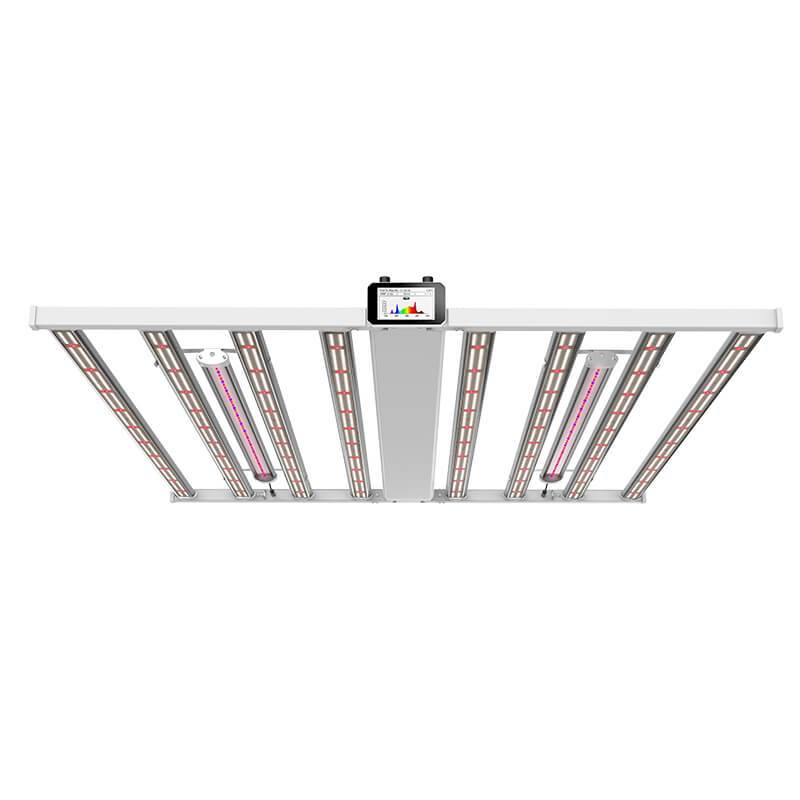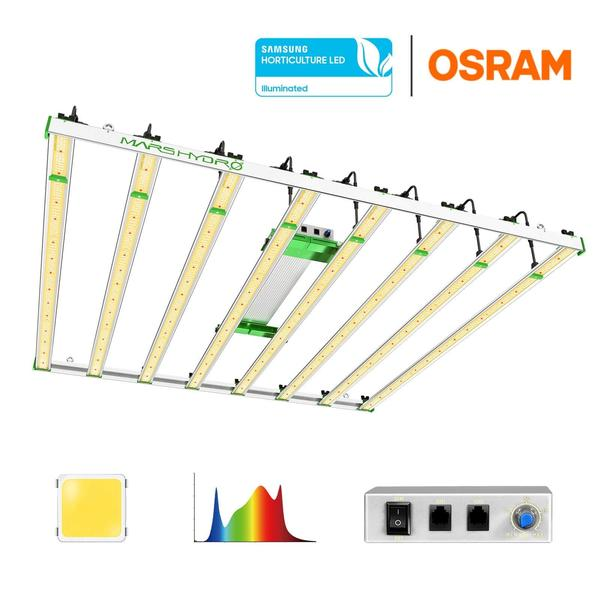- Home
-
SHOP ECO FARM
- ECO Farm Grow Lights
- ECO Farm LED Grow Lights
- ECO Farm Quantum Board
- ECO Farm Samsung LED Grow Lights
- ECO Farm COB Grow Lights
- ECO Farm Commercial Lights
- ECO Farm Supplemental Grow Light
- ECO Farm Fluorescent grow lights
- ECO Farm HPS & MH Grow Lights
- ECO Farm CMH Grow Lights
- ECO Farm HID/CMH Bulbs & Ballasts
- ECO Farm Grow Tents & Kits
- ECO Farm 2x2ft Grow Kits
- ECO Farm 3x3ft Grow Kits
- ECO Farm 3.3x3.3ft Grow Kits
- ECO Farm 4x4ft Grow Kits
- ECO Farm 5x5ft Grow Kits
- ECO Farm Grow Tent - Standard Style
- ECO Farm Grow Tent - Extension & Roof & Lodge Style
- ECO Farm Extraction & Harvest
- ECO Farm Rosin Press Machine
- ECO Farm Dry & Wet Trimmers
- ECO Farm Oil Accessories
- ECO Farm Medicinal Plants Grinder
- ECO Farm Medicinal Plants Containers
- ECO Farm Medicinal Plants Dryer
- ECO Farm Refrigeration Dryer
- ECO Farm Climate Control & Other Accessories
- ECO Farm Inline Duct Fans
- ECO Farm Oscillating Fans
- ECO Farm Exhaust Fans
- ECO Farm Air Filter
- ECO Farm Duct Muffler
- ECO Farm Ventilation Kits
- ECO Farm Plant Humidifiers
- ECO Farm Plant Dehumidifiers
- ECO Farm Hydroponic Accessories
- ECO Farm Other Accessories
- ECO Farm Hydroponics Microscopes
-
TOP BRANDS
- Grow Lights Brands
- Adjust-A-Wing
- Apollo Horticulture
- Bestva
- Black Dog LED
- California Lightworks
- ChilLED Grow Light
- Eco Farm
- HLG - Horticulture Lighting Group
- Kingled
- Kind LED
- Mars Hydro
- Morsen
- Neilo
- NextLight
- Phlizon
- PlatinumLed
- Roleadro
- Optic LED Grow Lights
- ViparSpectra
- Vivosun
- EYE Hortilux
- IPOWER
- NanoLux
- Phantom grow light
- Gavita grow lights
- Grower's Choice
- Lumatek
- Maxibright
- Yearld Pro
- ThinkGrow
- Crecer Lighting
- Green Sunshine Electric Sky
- fohse aries
- loriflux
- luxx
- fluence
- iluminar
- Lex
- LTC
- Rayonled
- FGI
- PHOTONTEK
- Grow Tents & Kits Brands
- Apollo Horticulture
- Black Box
- CoolGrows
- Eco Farm
- GrowLab
- Gorilla Grow Tents
- Mars Hydro
- Quictent
- Secret Jardin
- Unit Farm
- TopoGrow
- VIVOSUN
- Topolite
-
COMPANY INFO
-
COOPERATE WITH US
- Blog
ECO Farm MB4 880W Commercial LED Grow Light VS MARS HYDRO FC 8000 SAMSUNG LM301B OSRAM Commercial LED Grow Light
May 16, 2022
Indoor conditions are notoriously dim. While some plants quite enjoy this environment, there is a whole range of amazing-looking indoor varieties that thrive in bright, consistent full-spectrum light. If your home is dark or you wish to grow indoor plant varieties that enjoy consistent levels of light, your best solution is a high-quality set of indoor plant grow lights.
To help you find the options, this post will take you through the best grow lights for indoor plants that are sure to promote healthy, robust growth.
What are the best grow lights?
The best LED grow lights are electric lights that help plants grow. Grow lights either try to provide a spectrum similar to the sun, or a spectrum more suited to the needs of the plant. Simulate outdoor conditions with the different colors, temperatures and spectral outputs of the best LED grow lights, as well as the intensity of the lights.
Depending on the type of plant to be cultivated, the stage of cultivation (eg germination/vegetation or flowering/fruiting) and the photoperiod required by the plant, the specific spectral range, luminous efficacy and color temperature, the specific plant and time period needs to be used.
Why use the best LED grow lights?
The main reason to use the best led grow lights is that they reduce or eliminate your reliance on natural light (sunlight). Light is essential for plant growth, but is often in short supply (eg, indoors, in winter, or in densely populated urban areas). The best LED grow lights allow us to grow plants in different places or times of the year, which otherwise might not be possible. The best led grow lights are available for seed germination, houseplants, herbs, flowers, fruits, vegetables and more.
ECO Farm MB4 880W Commercial LED Grow Light

Features:
This ECO Farm LED grow light adopts 8 bars design with more even and complete canopy coverage. Equipped with high-efficiency Samsung LM301B diodes, extremely low thermal resistance. Grow lights no flicker and dim, and the life is up to 50,000 hours. Led grow light draws 880 watts with 2200 µmol/s, achieving a satisfactory PPE of 2.8 µmol/J, coverage for 5'x5’ of high-yielding full-cycle growth. Abundant types of wavelengths are consistent with the spectral range of plant photosynthesis. It can concentrate the light of a specific wavelength to irradiate crops in a balanced manner, and control the height of the plant and the nutrients of the plant. Speed up the synthesis of plant carbohydrates and vitamins, shorten the growth cycle. Indoor plant LED grow light uses advanced heat dissipation aluminium material and waterproof design. High-quality components ensure that the product works better during its life cycle. At the same time, it can also make you more at ease and more comfortable planting in the tent.
MARS HYDRO FC 8000 SAMSUNG LM301B OSRAM Commercial LED Grow Light

Features:
Mars Hydro grow light mounts 2968 pcs Samsung LM301B & Osram 660nm diodes. Make use of more than twice as many LEDs as comparable lights to drive the grow lights with a low current to stay away from overdrive. Quality guaranteed and high efficiency up to 2.9 μmol/j. This grow light has professional spectra for plant production to enhance blue and red light as a specific spectral combination, boosting plant growth while improving the year-round yield and product quality. Multi-light bar style and dense layout of light diodes enable FC8000 LED grow light to have PPFD values in the range of 1000–1500 μmol/m²/s throughout the effective coverage area. The dimming function is available for 0–100% variable brightness, adapts to different plant growth stages. Max 30 lights can be daisy-chained together and be controlled by one master light
How to Use Grow Lights for Your Indoor Plants?
Grow lights vary widely in the amount of radiation (PAR) available to their plants. At the same time, plants vary greatly in the amount of light they need. However, when it comes to grow lights, you need to consider two main variables, and they can usually be adjusted — they are distance and duration .
What is the Grow Light Distance to Plants?
Light decays very fast with distance. In fact, “point” light sources follow the so-called “inverse square law.”. This means that for every doubling of the distance from the light, the intensity decreases by a quarter. Therefore, the PAR value at 400 umol/m2/s from the growth lamp 4 inches (or 10 cm) may be enough to satisfy your basil plant, but when you move the grow lamp to 8 inches (20 cm) away from the plant, the PAR value will drop to about 100umol/m2/s, which may be too low.
Now there are ways to counteract this inverse square law — most commonly through lenses or optics that try to “direct” light in the direction of plants. While these are helpful and give you more flexibility in plant placement relative to light, the fact remains that the correct distance between the plant and the light will depend on the intensity of the light and the light requirements of the plant — and may be, in any case, from 2 inches (5 centimeters) to 6 feet (1.8 meters).
Can You Leave Grow Lights on 24 Hours A Day?
This question is easier to answer than the distance question, but it can still be very different. In “indoor grow light — how to measure it and understand watts, Par and DLI” (coming soon), we discussed the light measurement and daily light interval (or “DLI”) of plants.
But to introduce the concept, the light demand of plants is measured as a “volume” called DLI, which is equal to the flow (in PAR) times the duration. Therefore, a 400 umol / m2 / s light source operating 10 hours per day will provide the same amount of DLI as a 800 umol / m2 / s light source operating 5 hours per day. The DLI of both is 4000.
Generally speaking, the correct answer to grow lamp time is between 8 and 16 hours. You may choose the time suitable for your lifestyle and location. For example, if it is in the bedroom, you may not want 16 hours of grow lights. If you expect this lamp to be the core or characteristic of your living space, 8 hours may be too short.
Keep in mind that providing the same amount of DLI in a shorter time requires higher light intensity. That means more expensive lights. In addition, if the intensity is too high, you may burn your plants because of too much light — all plants have a limited limit on the speed at which they can comfortably absorb light.
If you exceed this speed, you will either damage them or even kill them. At the other end of the duration range, remember that plants (like us) do need “sleep.”. They have what’s called photorespiration. In fact, for many plants, dark ages are essential for flowering or fruiting.
Conclusion
You can produce indoor crops all year long by using artificial light from growth lamps. The truth is that there is no one-size-fits-all solution for the ideal growth light. When it comes to selecting a growth light for your situation, your budget and growing requirements should be the deciding factors.
Also in Indoor Grow LED Grow Light
HLG Greenhouse Pro HE HV 630W LED Grow Light VS Geeklight grow light 480W hydroponic led grow light
October 20, 2023
